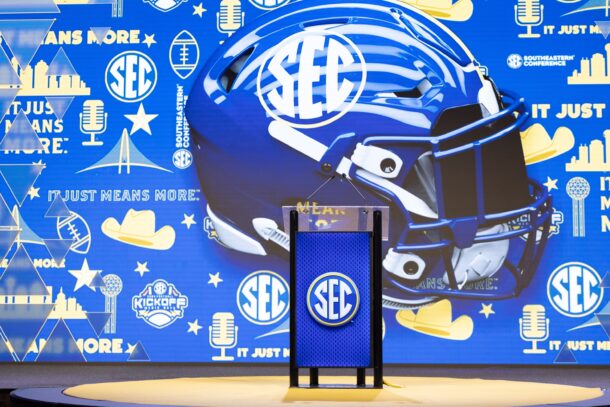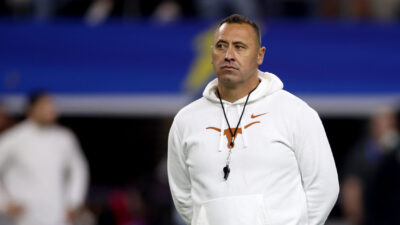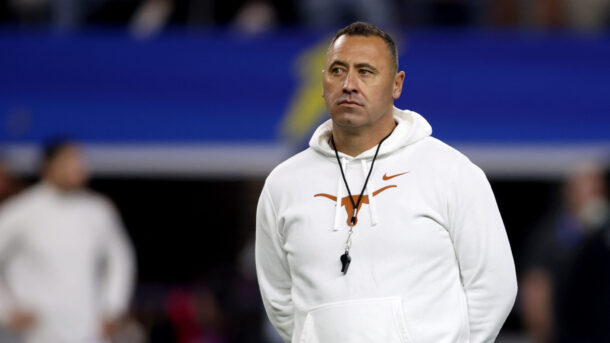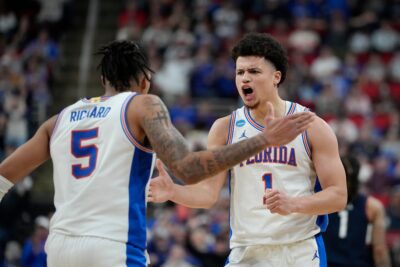Ad Disclosure
The 80th NFL draft came and went last weekend, and for the eighth year in a row the SEC produced more draft picks than any other conference in the land.
An SEC tailback — Georgia’s Todd Gurley — became not only the first college tailback to come off the board in the first round in three years, but he rose all the way into the top 10, where he was chosen by the St. Louis Rams.
The last time an SEC tailback was taken that high was 2012, when Alabama’s Trent Richardson went No. 3 overall to Cleveland. But the SEC is accustomed to producing even higher-drafted tailbacks than that. In the 80 years of the NFL draft, six No. 1 overall picks have been SEC tailbacks, dating as far back as the 1940 draft.
Let’s revisit those six No. 1 draftees and see how they fared in the NFL after representing the SEC as top picks.
GEORGE CAFEGO, TENNESSEE, 1940
Cafego was a two-time All-American halfback at Tennessee who was a Heisman finalist his final year in school. He excelled in college as both a runner and a passer, inspiring the NFL’s Brooklyn Dodgers to take him first overall in 1940. Unfortunately, his pro career didn’t pan out nearly as well as his college career. In four NFL seasons — one in 1940 and three more after he served in World War II — Cafego played primarily quarterback and threw for fewer than 1,000 career yards with five touchdowns against 16 interceptions. He’s a College Football Hall of Fame inductee, but never lived up to his billing as a No. 1 pick.
FRANK SINKWICH, GEORGIA, 1943
Sinkwich was a two-time consensus All-American at Georgia and the SEC’s first Heisman winner, earning the award in 1942, the same year he was named the Associated Press’ Male Athlete of the Year. He won that award over a number of legendary athletes, including baseball superstar Ted Williams, indicating just how big a star Sinkwich was at the time. He went first overall to the Detroit Lions in 1943, and like Cafego only played in the NFL for a brief time while also serving in World War II. In four NFL seasons before and after his military service he was a star for the Lions, Yankees (yes, they were a football team in those days) and Colts, winning the 1944 NFL MVP award. However, his lack of longevity cost him a possible shot at a Pro Football Hall of Fame bid.
CHARLEY TRIPPI, GEORGIA, 1945
Trippi was taken No. 1 overall out of Georgia only two years after Sinkwich achieved the feat, but his pro career was a much greater success than Sinkwich’s was. Trippi, a consensus All-American and Maxwell Award winner at UGA, was a three-time All-Pro and two-time Pro Bowler in nine seasons with the Chicago Cardinals, starring on their 1947 NFL championship team. He never won an MVP like Sinkwich, but he was named to the NFL’s All-Decade team from the 1940s and was inducted into the Pro Football Hall of Fame.
BILLY CANNON, LSU, 1960
Cannon, one of the greatest LSU Tigers in program history, is a rare case on this list as a No. 1 overall pick in both the NFL and AFL drafts in 1960. In fact, he was the first ever player drafted into the AFL, where he played for its entire 10-year history before playing his last year in the newly merged NFL. After winning the 1959 Heisman on top of a slew of other Player of the Year Awards, he was drafted by the AFL’s Houston Oilers, where he played for four seasons before spending six more with the Oakland Raiders. He was a three-time AFL All-Star, a two-time All-AFL honoree, the AFL’s 1961 rushing leader and a three-time league champion, twice with Houston and once with Oakland.
TUCKER FREDERICKSON, AUBURN, 1965
Frederickson, the 1964 SEC MVP and a two-time Jacobs Blocking Award winner at Auburn, was taken first overall in the 1965 draft by the New York Giants, for whom he played for the entirety of his seven-year NFL career. He was named to the Pro Bowl as a rookie in 1965 after amassing 865 yards from scrimmage and six total touchdowns, but he only posted more than 550 total yards from scrimmage one time in his final six seasons, as his career ultimately came to an end due to a knee injury suffered in 1971.
BO JACKSON, AUBURN, 1986
It’s been nearly 30 years since Jackson became the SEC’s last tailback to go No. 1 overall, and the story behind his journey from college to the NFL is as unique as they come. Jackson was taken No. 1 overall in 1986 by the Tampa Bay Buccaneers, but unlike most other No. 1 picks, he wasn’t too happy about his selection.
As Jackson tells it, before the draft, when Jackson was still playing baseball at Auburn, the Bucs flew him down to Tampa on a private jet to meet with members of the organization, as it was already obvious Jackson would go No. 1. Tampa told him that his trip to visit the organization would not constitute illegal benefits provided to an amateur athlete, allowing him to resume his role on the baseball team at AU. But when he returned to Auburn, he found out that he had indeed been ruled ineligible by the NCAA, and Jackson grew furious with the Bucs for cutting his college baseball career short and then lying about it.
He was already at odds with Tampa regarding his ability to pursue a pro career in both baseball and football (he was a national star in both, and was an Olympic-caliber track star to boot), and was not thrilled upon being given an ultimatum to choose one sport on which to focus. Between the ultimatum and the trip-gone-wrong, Jackson vowed never to play for the Bucs and kept his word, sitting out the entire 1986 season.
The Bucs relinquished his rights just before the 1987 draft, but by then Jackson was pursuing a baseball career in the minor league system of the Kansas City Royals. Nevertheless, the Los Angeles Raiders took him in the seventh round (183rd overall), and owner Al Davis was in a vast minority of NFL executives and owners willing to let Jackson pursue a career in both sports. As a result, Jackson became a Raider, and the rest is history.
In a span of four years Jackson earned Pro Bowl honors in the NFL and was named an All-Star in the MLB, making him the first player in the history of America’s four major sports leagues to earn All-Star honors in more than one of those leagues. Unfortunately, a gruesome hip injury in 1990 ended his football career. He amassed only 3,100 yards from scrimmage and 18 total touchdowns in those four years, and many wonder if Jackson might have made the Hall of Fame had he never gotten hurt.
So Jackson was both the No. 1 overall pick and a seventh-rounder. He was both a Pro Bowler and a Major League All-Star. He is both a legend and yet tremendously unaccomplished for his talent (due to the injury). It’s safe to say there will never be another No. 1 pick like Bo Jackson.
A former newspaper reporter who has roamed the southeastern United States for years covering football and eating way too many barbecue ribs, if there is such a thing.




